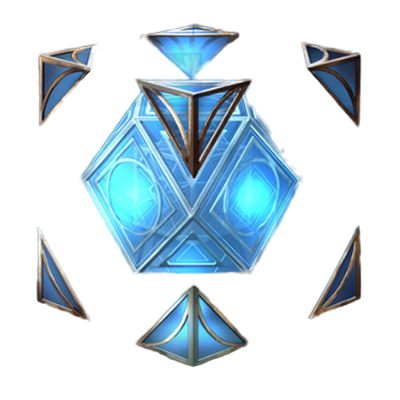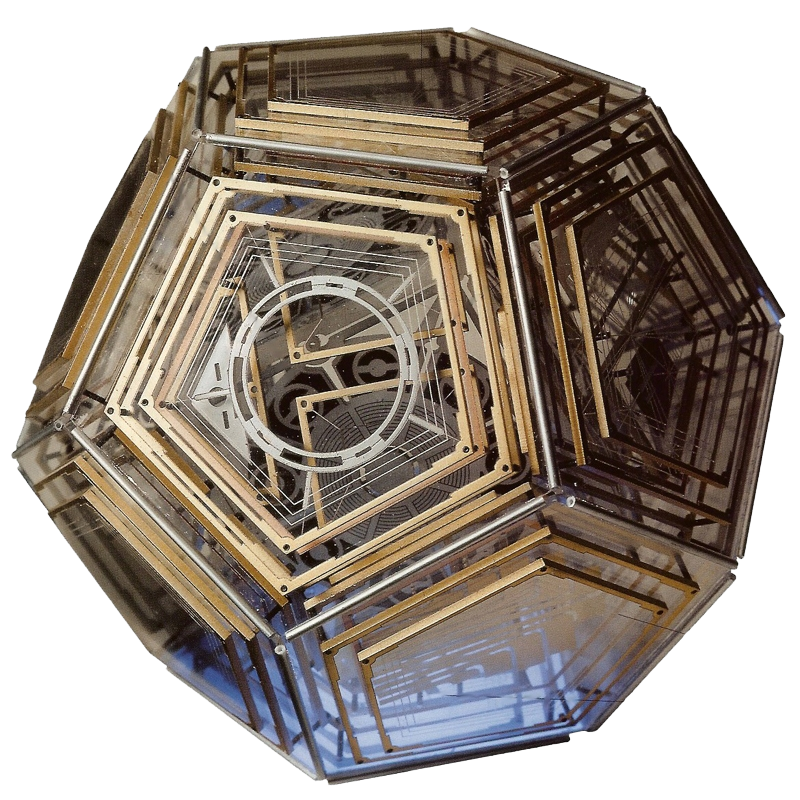Holocrons were information-storage devices used by both the Jedi Order and the Sith that contained ancient lessons or valuable information in holographic form. They appeared as palm-sized, glowing polyhedrons of crystalline material and hardware, and could only be activated and used through the power of the Force.

An opened Jedi holocron
Holocrons were information-storage devices that could fit in the palm of the hand. Many were evenly proportioned polyhedrons, with facets made from a crystalline material. Some had transparent outer shells that allowed their users to perceive their inner mechanisms, and they glowed when activated. Those built by the Jedi were cubes cuboctahedrons, or dodecahedrons like the Great Holocron. Those built by the Sith were pyramids or tetrahedrons. They functioned similarly to their Jedi counterparts, and contained the ancient secrets of the dark side and the Sith Order. The holocrons built by the Dai Bendu contained their tracts. Although their function and appearance were similar to the Jedi holocrons, unlike them, they could be accessed even by the most unskilled Force-sensitives.
Holocrons acted as repositories of vital, sensitive knowledge and wisdom pertaining to the nature and use of the Force, a mystical energy field that connected all living things in the galaxy. Data playback typically took the form of an interactive hologram resembling the person who recorded the information. Given the sensitive nature of the lessons they contained, many such devices were equipped with a security mechanism that granted access only to those keenly attuned with the Force. Additionally, many holocrons could only be activated if paired with a specific memory crystal. When the Force was correctly used to open a holocron, it would physically manipulate its various mechanical parts to grant the user access to its data. Each of these individual parts was imbued with the power of the Force, and could provide some functionality even if they were removed from the holocron, such as being able to remotely manipulate the data of another holocron or track down the location of certain Force-sensitive individuals.
If a Jedi holocron and a Sith holocron were opened together by a lightsider and a darksider, they would fuse and be able to answer any question the users desired. Holocron fusions were incredibly uncommon, due to the rarity of having a lightsider and darksider work together, and by the Galactic Civil War knowledge of the practice was mostly lost.
The earliest holocrons were attributed to the Dai Bendu, the precursors of the Jedi.
Over the centuries hundreds of Jedi holocrons were made. Valuing those artifacts both for their invaluable lessons and historical significance, the Jedi kept them in the Great Jedi Library on Ossus and in the Archives of the Jedi Temple on Coruscant. The most valuable specimens were locked away in the restricted Holocron Vault.

A dodecahedral holocron known as the Great Holocron
During the Clone Wars, Cad Bane executed a daring heist to steal one of these artifacts from the Vault, specifically the Kyber memory crystal. After Darth Sidious founded the Galactic Empire and ordered the Great Jedi Purge, holocrons became scarce remnants of a bygone era. However, Imperial agents trained in the dark side of the Force, such as the Jedi-hunting Inquisitors and Darth Vader, occasionally sought both Jedi and Sith holocrons in hopes of obtaining information that would aid in the destruction of their adversaries.
Some time after the Clone Wars, Grakkus the Hutt obtained a number of Jedi holocrons that he kept on Nar Shaddaa. These were later taken by Darth Vader to further impede possible Jedi training.
By the time of the New Republic Era, when Luke Skywalker had trained his own students in the Jedi arts, he had holocrons at his Jedi Temple. Furthermore, he used one to teach one of his students, Hennix. Dok-Ondar sold Jedi and Sith holocrons at his Den of Antiquities in Black Spire Outpost on the Outer Rim world of Batuu.
Holocrons made their first canon appearance in "Holocron Heist," the premiere episode for Season Two of the Star Wars: The Clone Wars television series. However, they were originally developed by Tom Veitch and Cam Kennedy for the Legends comic series Star Wars: Dark Empire, published by Dark Horse Comics in 1991–1992.
Industrial Light & Magic master modelmakers Don Bies and John Goodson crafted three holocrons (a cubic one, a pyramidal one, and a dodecahedral one) to be photographed for page 29 of the Legends reference book Star Wars: Attack of the Clones: The Visual Dictionary by Dorling Kindersley, which was released in 2002. All three props have since reappeared in canon reference books, including Ultimate Star Wars, Star Wars: The Visual Encyclopedia, and Star Wars: The Complete Visual Dictionary, New Edition.
Real-life holocron replicas are available for sale at Galaxy's Edge, a Star Wars–themed land at Disneyland and Disney's Hollywood Studios.
- Star Wars: Jedi Temple Challenge — "Episode 1"
- Star Wars: Jedi Temple Challenge — "Episode 2"
- Star Wars: Jedi Temple Challenge — "Episode 3"
- Star Wars: Jedi Temple Challenge — "Episode 4"
- Star Wars: Jedi Temple Challenge — "Episode 5"
- Star Wars: Jedi Temple Challenge — "Episode 6"
- Star Wars: Jedi Temple Challenge — "Episode 7"
- Star Wars: Jedi Temple Challenge — "Episode 8"
- Star Wars: Jedi Temple Challenge — "Episode 9"
- Star Wars: Jedi Temple Challenge — "Episode 10"
- LEGO Star Wars: The Freemaker Adventures — "A Hero Discovered"
- LEGO Star Wars: The Freemaker Adventures — "The Lost Crystals of Qalydon"
- LEGO Star Wars: The Freemaker Adventures — "The Pit and the Pinnacle"
- The Sims 4 Star Wars: Journey to Batuu
- LEGO Star Wars: The Skywalker Saga
- LEGO Star Wars Terrifying Tales
- LEGO Star Wars: Build Your Own Adventure